
Health July 18, 2025
How Proper Hydration Accelerates Abrasion Healing Naturally
Why Your Skin Loves Moisture: The Science Behind Hydration and Healing
Stop picturing wound healing as skin simply "growing back." The reality is a buzzing construction zone, with cells, proteins, and even tiny blood vessels working together like a hyper-focused renovation crew. When you scrape your skin, this team rushes in. But, if the environment around them—your wound area—is dry, things slow to a crawl. Here’s why: cells called keratinocytes need moisture to move across the wound and rebuild the skin barrier. When a wound dries out, a hard scab forms, blocking these repair cells from doing their job efficiently. Moisture keeps the environment perfect for new cells to glide in, multiply, and patch you up.
Back in the ‘60s, a classic study by Dr. George Winter totally changed wound care. He proved that covering wounds to keep them moist sped up healing, sometimes twice as fast compared with dry wounds. Suddenly, the humble bandage got a major upgrade, and doctors started paying real attention to ‘moist wound healing’ (which is still a thing—just Google it!). Bandage companies soon followed, developing hydrocolloid and film dressings that lock in moisture. The numbers back this up: moist wounds heal up to 50% quicker and with less scarring than dry wounds, according to recent stats from the International Wound Journal in 2023.
Now, let’s talk hydration from the inside out. Skin is basically your body’s waterproof suit, made to keep water in and germs out. When you’re dehydrated, your skin loses elasticity and efficiency, making it harder for healing to run smoothly. Water is the key ingredient every healing cell needs to multiply and rebuild. Even a mild drop in hydration can slow everything down. Think of it as running in sand rather than on pavement. One interesting fact: a study from the University of Pennsylvania in 2022 found that drinking an extra cup or two of water a day improved wound closure rates in healthy young adults after minor injuries.
But what about ointments and creams? Many popular wound ointments (like petroleum jelly or hydrogel) aren’t just soothing—they actually work by sealing in moisture. These create a cozy, damp microenvironment, stopping a scab from forming and giving skin cells free rein to repair the damage. You’ll want to avoid things like alcohol or hydrogen peroxide for cleaning abrasions. They dry out the skin, destroy healthy cells, and may delay healing. Mild soap, water, and a gentle pat dry is all you need at first. Then, pop on a moisturizing wound gel or plain petroleum jelly before covering with a breathable dressing.
Moist wound care also cuts the risk of infection. When wounds dry out and crack, tiny openings appear for bacteria to invade. A hydrated wound stays flexible, reducing breaks and keeping those dangerous germs at bay. Doctors now rank proper moisture balance as one of the key ways to lower infection rates in minor skin injuries. The American Academy of Dermatology even lists moisture-retaining dressings as first-line care for abrasions, based on up-to-date evidence.
Age, health conditions, and diet all play a part. People with diabetes, the elderly, and those with poor diets (think: low in fruits, veggies, or water) are more prone to slow healing—and dryness only worsens the problem. Keeping the wound moist externally, while drinking enough water throughout the day, gives their bodies (and their wounds) a real advantage.
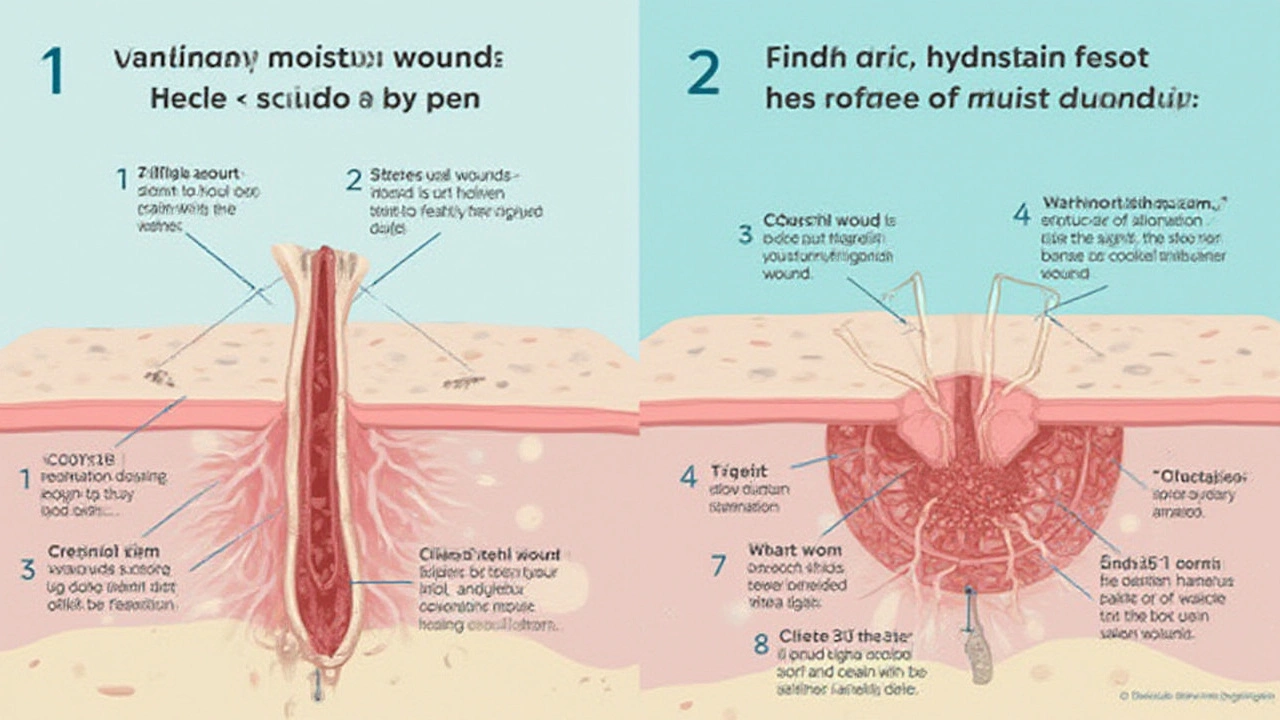
How to Hydrate for Quick and Clean Healing
So how do you actually hydrate a scrape the right way? Picture this as a two-step routine: what you do for your body, and what you do for your skin. For your body, it’s about steady hydration, not gulping a gallon at once. Try sipping water throughout the day, tuning in to thirst, and eating foods that are water-rich. Did you know cucumbers, melons, oranges, and even lettuce are over 90% water? Add more of these when caring for a wound.
For your skin, less is more when cleaning wounds: stick to running water and gentle soap, then leave the harsh stuff behind. Once clean, skip the temptation to leave the wound bare. Cover it with a thin layer of petroleum jelly or a specialized wound gel to keep things moist, then use a breathable, non-stick dressing. Change the bandage daily—or more often if it gets wet or dirty—but always keep the abrasion slightly shiny from the jelly, not crusty or bone dry.
Don’t be afraid to question outdated advice. Grandparents may say "let it air dry," but most modern dermatologists will firmly disagree. It’s fine to let a wound "breathe" for a few minutes after washing, but keeping it hydrated and covered does wonders. For kids especially, this also helps prevent itching and picking at scabs (which leads to scars you’ll wish you could zap away later).
There’s more than one way to cover a wound. Special adhesive bandages (hydrocolloid dressings) are easy to apply, don’t stick to healing skin, and naturally lock in moisture. Make sure you pick the right size and avoid anything too tight. If an abrasion is large or you’re stuck with a sensitive spot (like your face or joints), use a flexible, breathable dressing.
Fancy keeping tabs on your healing? Dermatologists sometimes use a little measuring trick—tracking the size and appearance of a wound each day on a piece of paper. If it looks redder, swells, or leaks yellow/green fluid, call your doc for advice. But as long as it’s shrinking and staying clean, you’re doing it right.
| Hydration Method | Effect on Healing | Tips |
|---|---|---|
| Internal (Drinking Water) | Improves cell function, boosts recovery speed | Drink about 8 glasses/day (or more during hot weather/exercise) |
| External (Moisturizing wound gel/jelly) | Keeps cells moving across wound, prevents scab, less scarring | Apply a thin layer after cleaning, before dressing |
| Moist Dressings (Hydrocolloid, Film) | Maintains ideal environment, lowers infection risk | Change only when necessary; avoid over-drying |
If you’re into stats, here’s something neat: in a survey funded by the American Academy of Family Physicians in 2024, over 80% of doctors said they recommend moist dressing for abrasions as their go-to advice for fast and scar-free healing. Only a small handful still stick to dry wound care—and most admit their reasons are habit, not evidence.
Hydration doesn’t mean ‘wet’—it’s a balancing act. If a wound’s soggy and white, that’s too much, and can lead to delayed healing or skin breakdown (it’s called "maceration"). The ideal is a moist, not soaking environment—think of it as dewy, not drenched. If you notice the skin around your abrasion looks wrinkly, time for a dressing change or to use a less-occlusive covering.
And what about cleaning bruises, scrapes, and burns with fancy, expensive sprays? Marketing often oversells these products. Most of the time, clean running tap water works just fine. Save your money for a good supply of gentle, non-stick bandages instead.

Everyday Tips for Quicker Recovery and Fewer Scars
It’s one thing to understand the science, but what are the real-life habits that help scrapes heal fast—with as little drama or leftover reminder as possible? Here’s what works in my own home—and what’s got dermatologists and ER nurses nodding along:
- Hydrate from the inside out. Keep a refillable water bottle handy. Flavor plain water with fruit slices, mint, or a splash of juice if it gets boring.
- Eat hydration-rich foods: Think watermelon, cantaloupe, cucumbers, oranges, and even tomatoes. Your skin (and stomach) will thank you.
- Keep abrasions clean but don’t overdo it. Once to twice a day is enough for minor wounds. Over-cleaning dries and irritates.
- Use a hydration-locking ointment or hydrocolloid bandage to trap moisture where it’s needed.
- Be gentle—don’t scrub or pick scabs if they form. Picking slows down everything and ups the scar risk.
- Watch for early signs of healing: reduced redness, less pain, new skin forming at the edges. That’s your cue that what you’re doing is working.
- If an abrasion is in a spot where it rubs (knees, elbows) or you’re active, check the dressings more often. Wet, dirty, or loose bandages invite trouble.
- Skip strong antiseptics (alcohol, iodine, hydrogen peroxide) on the wound itself unless specifically directed. These can kill healthy skin cells and increase healing time.
- Consider your shoes and clothing. Avoid tight, non-breathable fabrics over abrasions.
- If you have a skin condition (eczema, psoriasis, or diabetes), talk to a healthcare provider for specialized wound care, as your skin needs extra TLC.
Curious about scars? Hydrated wounds end up with softer, flatter scars because the skin cells had a better chance to lay down their new ‘fabric’ smoothly. Dry wounds, meanwhile, leave tough, raised, or widened scars—as many tattoo artists and dermatologists see in their daily work. If you’re still tempted to go old-school and let it ‘air’, try it once on a hidden spot like the thigh—and compare the outcome to one you kept moist and covered. The difference is striking.
So, next time a tumble happens—whether it’s you, a kid, or a clumsy friend—skip the tough-it-out scab and embrace being a little extra with your hydration game. Your skin is doing way more work under the surface than you’d think, and it needs all the help you can give. Think of it as low-stakes science with a very visible, and satisfying, pay-off—smoother skin, quicker healing, fewer scars. And hey, who doesn’t want a little less drama from life’s bumps and scrapes?
Write a comment
Items marked with * are required.
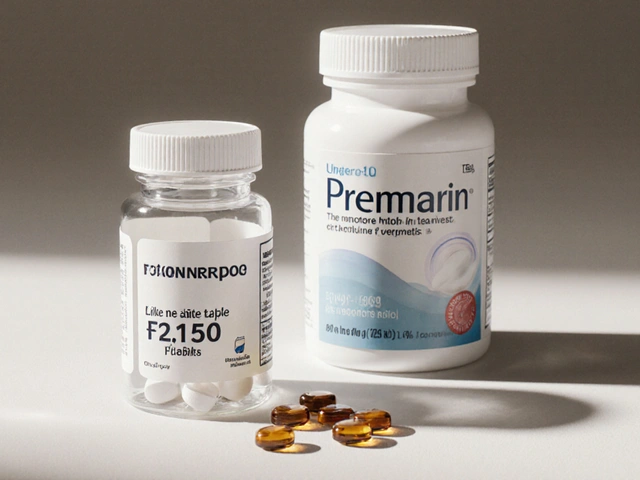

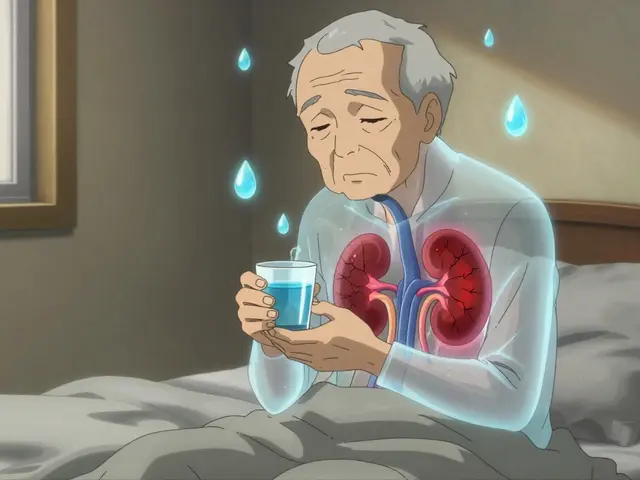
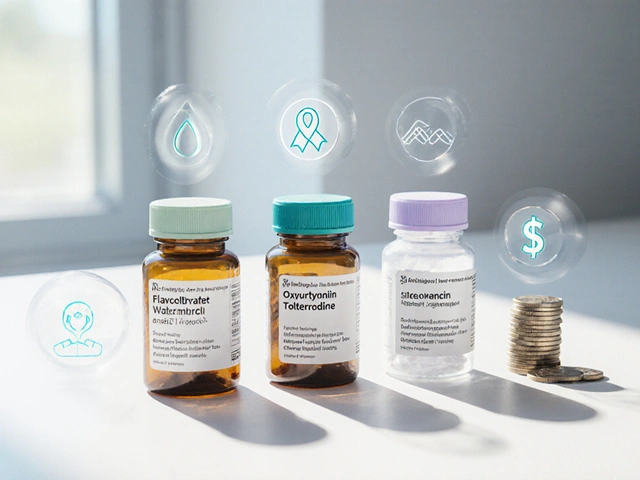
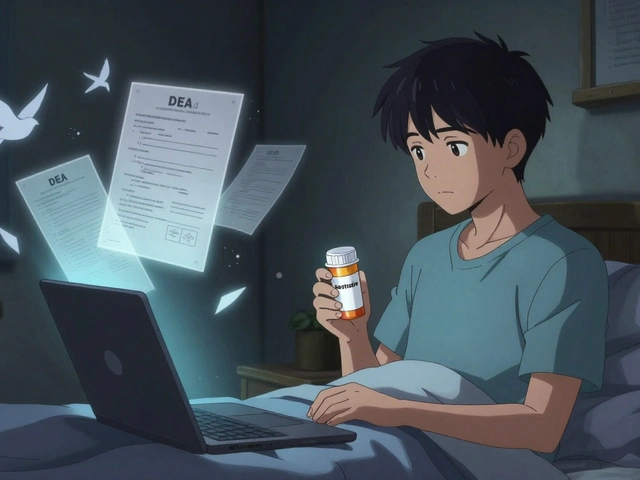

14 Comments
Robert Gallagher July 24, 2025 AT 16:30
Just drank a gallon of water after scraping my knee on pavement last week. Skin healed faster than my ex's new relationship. Seriously though, hydration is the cheapest superfood out there.
Don't overthink it. Drink water.
Howard Lee July 24, 2025 AT 23:15
It's fascinating how the body's natural repair mechanisms are so heavily dependent on adequate fluid balance. Cellular regeneration, collagen synthesis, and inflammatory modulation all require optimal hydration levels. Science confirms what our grandparents always said: drink your water.
Nicole Carpentier July 25, 2025 AT 04:08
I'm from Puerto Rico and we've always known this. Abuela would put aloe vera and coconut water on every scrape. Now science backs it up. 🌴💧
Hadrian D'Souza July 25, 2025 AT 05:51
Oh wow, you actually believe water heals abrasions? Did you also get your wisdom from a TikTok influencer who drinks lemon water at 3 AM? Let me guess-your skin glows because you cry into your Gatorade. 🤡
Brandon Benzi July 25, 2025 AT 06:11
America invented modern medicine. You think some hippie hydration trend beats that? We've got FDA-approved ointments. Drink water if you want, but don't pretend it's medicine.
Abhay Chitnis July 25, 2025 AT 15:33
Bro, hydration? 😂 I survived 40°C heat in Delhi with 1L water a day and still ran 10k. Water doesn't heal, your body does. Stop overcomplicating things. 🤷♂️
Robert Spiece July 26, 2025 AT 08:27
The real question isn't whether water helps-it's why we've been conditioned to treat biological processes like they need marketing campaigns. We're mammals. We evolved with sweat, tears, and blood. Water isn't magic. It's baseline. And yet here we are, treating hydration like a spiritual awakening.
Vivian Quinones July 26, 2025 AT 12:19
I don't care what science says. My cousin got a burn from a grill and she just put butter on it. Three days later, fine. Water? Nah. Old ways work better.
Eric Pelletier July 27, 2025 AT 19:55
Hydration supports dermal perfusion and interstitial fluid dynamics, which facilitate fibroblast migration and extracellular matrix remodeling. In clinical terms, euhydration reduces inflammatory cytokine load and enhances epithelialization kinetics. TL;DR: water helps. A lot. Especially if you're dehydrated to begin with.
Marshall Pope July 28, 2025 AT 00:12
i didnt even know you could heal faster by drinkin water lmao. i just used band aids and prayed. guess i was doin it wrong lol
Nonie Rebollido July 28, 2025 AT 18:13
I just noticed my cuts heal faster when I’m not stressed and drink enough water. Not sure if it’s the water or just not being a mess. 🤷♀️💧
Agha Nugraha July 29, 2025 AT 02:41
In my village in Java, we use coconut water and turmeric paste. Works well. Water alone helps too. Simple things often work best.
Andy Smith July 30, 2025 AT 16:02
It's important to note that while hydration is critical, it's not a standalone intervention. Optimal wound healing requires a combination of adequate protein intake, micronutrient sufficiency (especially zinc and vitamin C), sleep hygiene, and avoidance of systemic stressors. Water is a necessary, but insufficient, component of the healing cascade.
Rekha Tiwari August 1, 2025 AT 14:57
My grandma used to say, 'Water is the soul of the body.' Now I see why. I got a bad scrape last month, drank 3L a day, and it was gone in 5 days. No cream, no drama. Just water and rest. 🌸💧